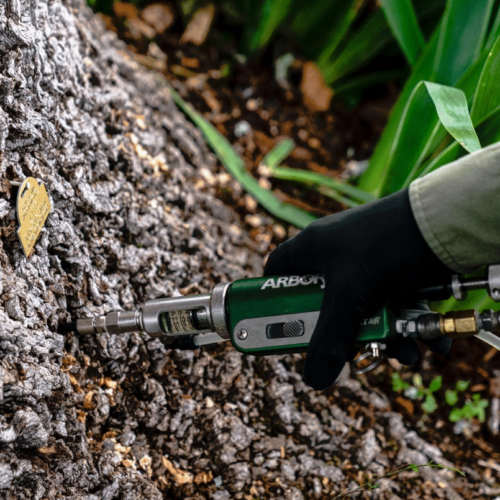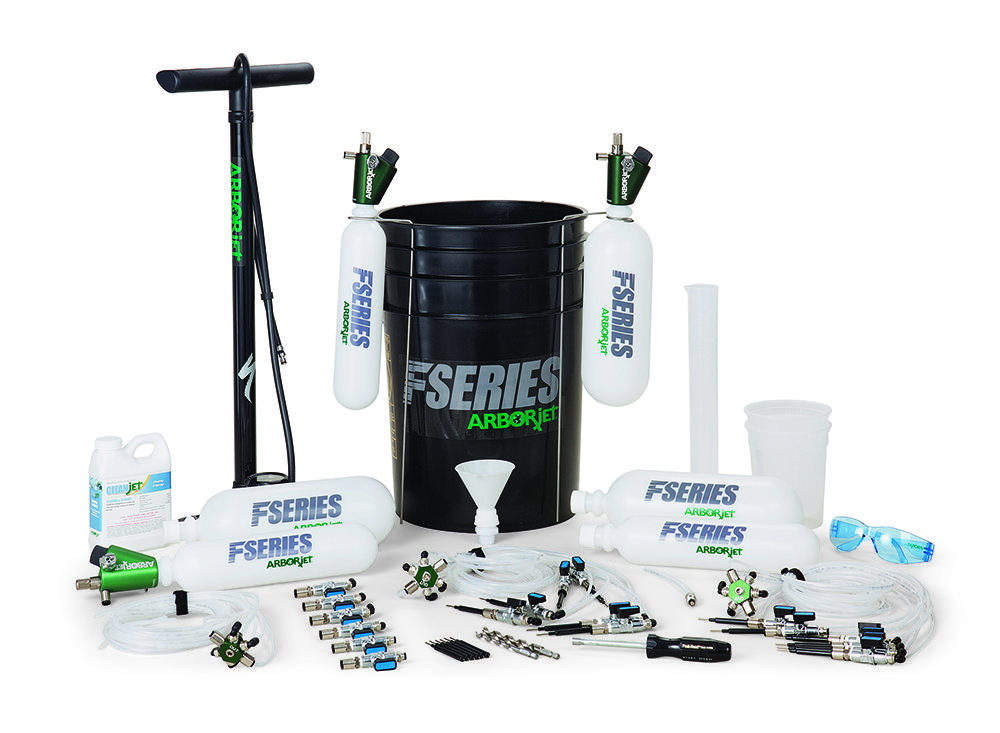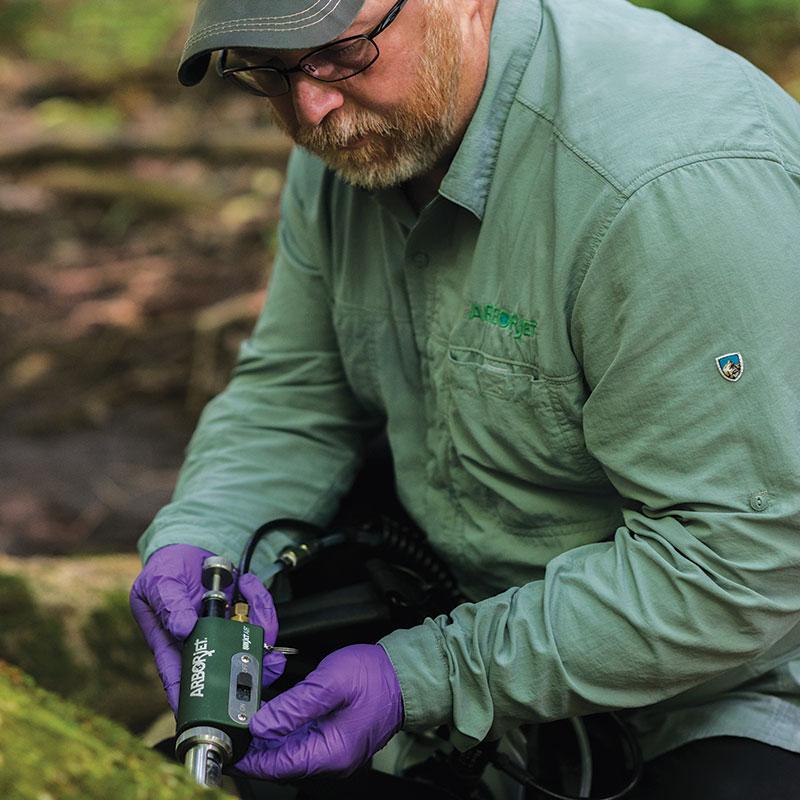The idea of applying an injected liquid into the vascular system of trees is not new. Leonardo da Vinci was the first to investigate the method in the 15th century! But why inject trees in the first place? There are a number of reasons to do so, the most salient being to protect trees from destructive pests. The most notorious of tree pests are those that have been inadvertently introduced as the result of global imports. The hit list of the “least wanted” pests include hemlock woolly adelgid, Japanese beetle, Asian longhorned beetle, emerald ash borer, spotted lanternfly, and brown marmorated stinkbug, just to name a few. Tree injection technology has advanced quite a bit since those early days with da Vinci. Let’s take a look.
Basics of Tree Injection
What is tree injection anyway, and how does it work? Tree injection is a method of introducing a liquid chemistry into the vascular system of the tree for systemic activity. A hole is drilled into the sapwood of the tree and a plug is inserted (e.g., Arborplug), forming a point into which a needle can be inserted. This helps facilitate the transfer of liquid from the injection device into the tree.
Why does this work? The sapwood (xylem) of a tree is tissue that is designed to move liquids. Normally, it moves water and solutes in trees from roots to shoots. By using this pathway, one can administer an effective dose into very tall trees.
By implication, tree injection eliminates off-target drift encountered when the canopy of the tree is sprayed. Because of the targeted nature of tree injection, less formulation is required to control a pest, and the chemistry itself lasts longer because it is protected from photodegradation. This means that trees need only infrequent treatment, often only once a year, and sometimes as little as once every three years!
Tree Injection Devices
Arborjet has designed some pretty cool tree injection technologies. These include the QUIK-jet AIR and the FSeries® Tree I.V.
The QUIK-jet AIR is a micro-injection device designed to administer a measured dose into the tree. It is designed specifically for systemic insecticide applications. The QUIK-jet AIR uses compressed air to push a piston to deliver a measured dose. The QUIK-jet AIR has a 5-cc barrel capacity. It is a light weight tool that easily fits one hand. Application is as easy as a push of a sliding switch! This is a great tool for users that are totally analog (myself included)!

The FSeries® Tree I.V. is a micro-infusion® system designed to make high volume applications into trees. Its versatility in design, allows for applications of high volumes of fungicides and anti-biotics into trees. To maximize efficiency in applications, use multiple I.V.s to treat typically, two to six trees at a time! Using the FSeries is akin to having an extra pair of hands, allowing the applicator to treat multiple trees on a property all at once! It’s designed to adjust to the trees rate of uptake. Some trees are slow to take up on account of environmental factors or because of a tight vascular system.
Ideally, make applications with the FSeries when there is sufficient soil moisture, and relatively low ambient humidity. These conditions favor stomatal opening and easy flow up the tree. Some species have tight vasculature that restricts systemic uptake. Examples are pines, spruces, firs and hemlocks. These coniferous trees rely on small diameter tracheids to move liquids into the tree canopy. These species lend themselves to FSeries use. By setting up your systemic application in multiple trees at once, you will optimize your time to make the applications. In the early days of research, we successfully treated hemlocks infested with hemlock woolly adelgid using the Tree I.V. We have since optimized the dosages for successful treatment in hemlock giving you a choice to use either the QUIK-jet AIR or FSeries when making applications!

Tree injections are a unique and incredibly useful technology that provide additional options to plant health care providers and benefits to trees and the environment. The ability to get useful formulations directly into trees without worrying about environmental side effects cannot be disregarded. There have been many advances in this technology, and even more to come soon. Can’t wait to see what’s next!
~ Signing off for now, Joe

